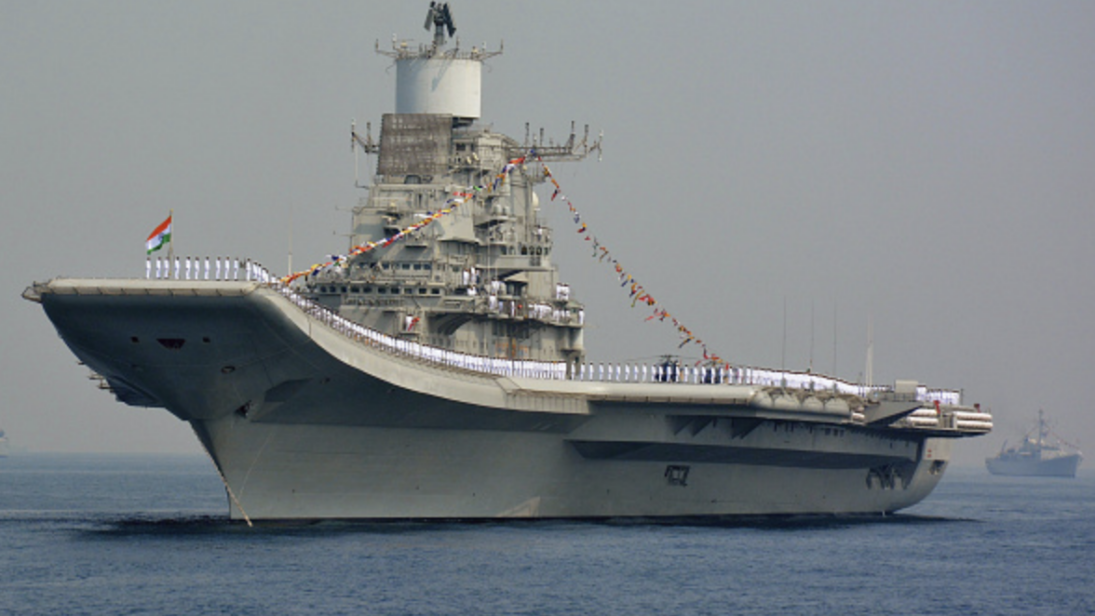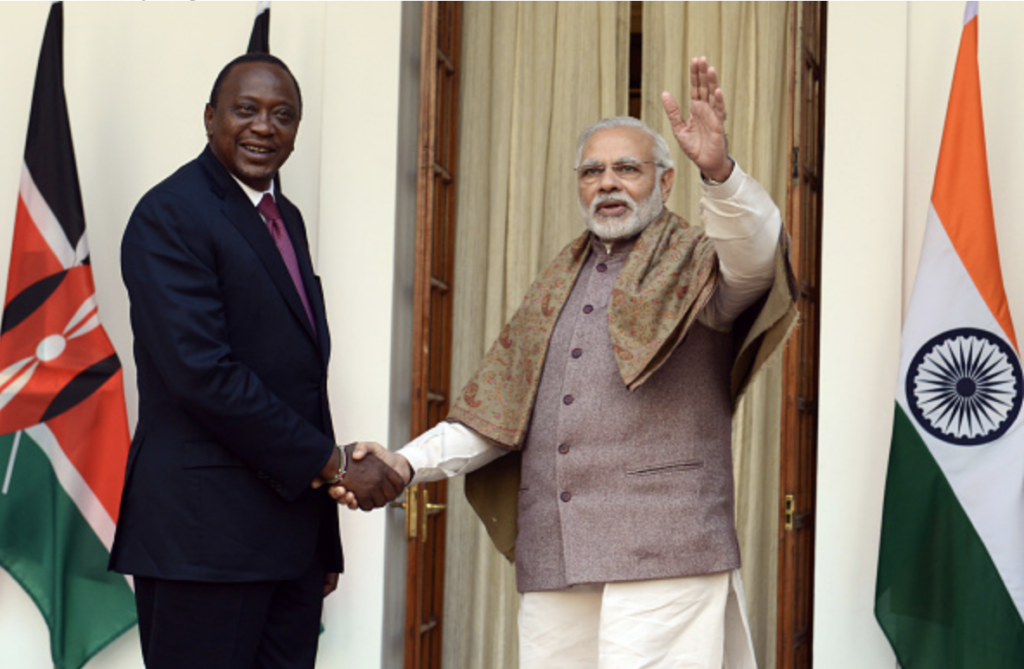
In a long-delayed move, the White House announced its intent to integrate African states into Indo-Pacific forums, according to its latest strategy document for Sub-Saharan Africa from August 2022.
The Biden administration’s expansion of the geographic definition of the Indo-Pacific to include the entire Indian Ocean, while a positive first step, is merely a symbolic move unless complemented with concrete policy action. The continued Department of Defense divisions of the Western Indian Ocean region across the Central Command and Africa Command hinder a whole-of-government approach resulting in fragmented policy action. In the context of global geopolitical transformations marked by the intensifying U.S.-China strategic competition, the Biden administration must examine its existing Indo-Pacific policy to rationalize the emergence of the Western Indian Ocean as a potential theater for great power competition. A failure to achieve the long-held vision of rules-based order in the Indo-Pacific with concrete actions risks the United States being reduced to a reactive, rather than proactive, partner in the region.
U.S. Engagement in the Western Indian Ocean: Is it Enough?
The Indian Ocean region is best understood as a “region of interlinked, yet distinct sub-regions” broadly encompassing South Asia, the Middle East, Africa’s eastern coast, and various island countries spanning from the Cocos (Keeling) Island in the east to the Comoros Archipelago in the West. The Western Indian Ocean (WIO) covers the vast oceanic space stretching from the Red Sea, along coastal East Africa, to the Gulf of Oman and the island nations of the Arabian Sea. Linking Africa, Asia, and the Middle East, the WIO is home to several sea lanes of communication and maritime choke points, which are vital for sea-borne trade, uninterrupted energy supply, and overall economic security.
Still, there are discrepancies in the definitions of the Indo-Pacific Region and the Western Indian Ocean. Previous administrations sealed the contours of the Indo-Pacific to the western shores of India, omitting all of the WIO. In Washington’s strategic imagination, the geography of the Indo-Pacific coincided with USPACOM’s area of responsibility, and the command name change to U.S. Indo-Pacific Command in 2018 formalized this perception. Recognition of India’s role in the Pacific, East Asia, and Southeast Asia was identified as a major motivation for the United States’ reimagination of the Asia-Pacific as Indo-Pacific, yet New Delhi itself has consistently maintained that its conception of the ‘Indo-Pacific’ extended “from the shores of Africa to that of the Americas.” Similar dissonance emerges from the QUAD’s recognition of instability in Afghanistan is a threat to Indo-Pacific security requiring coordinated effort from all four member countries. Nevertheless, two key South Asian countries—Afghanistan and Pakistan—fall beyond the geographic scope of Washington’s activities in the Indo-Pacific.
Preoccupied with tension-inducing maritime sovereignty claims in the Western Pacific, Washington’s engagements in the region were largely confined to security pacts and naval access agreements with key littoral states.
Washington has traditionally maintained a notable military presence in the region. Through naval assets in Gulf Cooperation Council member countries and a military base in Djibouti, the United States can protect its primary security interest of ensuring uninterrupted supply of hydrocarbons flowing through the region. Preoccupied with tension-inducing maritime sovereignty claims in the Western Pacific, Washington’s engagements in the region were largely confined to security pacts and naval access agreements with key littoral states. Despite that, the WIO is no longer on the maritime periphery of countries’ foreign policy agendas.
China’s Multi-Pronged Strategy in the Western Indian Ocean
Beijing has adopted a multi-pronged strategy for the region, which focuses not only on increasing military presence in the region but also on diplomatic, informational, and economic engagement. The People Liberation Army Navy (PLAN) has quickly established a near constant presence in the region, including its first overseas “logistics-support” base in Djibouti. Just miles away from Washington’s Camp Lemonnier, there have been instances of Chinese-deployed lasers from the base injuring U.S. airmen. The PLAN’s active presence in the WIO is accompanied by economic and infrastructure ties with key coastal countries, like Kenya, Ethiopia, Tanzania, and Sudan under the Belt and Road Initiative framework. Today, China is engaged in major port-building activities in Kenya, Tanzania, and Madagascar. Furthermore, two of China’s most significant railway projects in Africa are in Kenya and Djibouti, through which Beijing is placing itself as the driver of economic transformation in the region.
Notably, the United Arab Emirates, Oman, Saudi Arabia, and Egypt have been at the center of Chinese investments as Beijing tries to forge an Japan’s Free and Open Indo-Pacific (FOIP), France’s Indo-Pacific Strategy, and India’s SAGAR vision all define the Indo-Pacific to include the entire Indian Ocean, reaching the African continent. For Japan, the Western Indian Ocean is central in its connectivity plans for Asia, Africa, and the Middle East under the Indo-Pacific framework. France’s centrality in the WIO region stems from its overseas Indian Ocean territories which encompass 20 percent of France’s total exclusive economic zone. With vital energy and resource interests in the WIO, India’s 2015 Maritime Doctrine identifies the region as a “primary area of maritime interest.”
Japan’s engagement with the region has focused on development cooperation with notable financial investments for port development in Mozambique, Madagascar, Seychelles, Kenya, Oman, and Iran. In addition, France has a strong diplomatic presence in the region with highly active and involved participation in the Indian Ocean Commission, one of the few major institutions which focus on the WIO. France has also built strong economic and defense relations with the Gulf countries, especially the UAE and Qatar.
Building on New Delhi’s deep-rooted cultural ties with East African nations and strong diasporic connections, India has diversified ties to prioritize maritime security and developmental cooperation. The African Union’s emphasis on the blue economy for the continent’s growth aligns well with Modi governments push for the Sagarmala project, Delhi’s blue economy vision for port-led coastal economic development. In his speech at the Parliament of Uganda, Modi outlined India’s vision to work with African partners to harness the benefits of the blue economy in a sustainable manner.

India’s deepening economic relations with the Gulf countries have also paved the way for more broad-based defense cooperation. The Indian navy now conducts naval exercises with almost all major GCC countries. The current government has clarified that New Delhi is prioritizing the WIO starting with Prime Minister Modi’s 2015 Indian Ocean tour, which included visits to the key WIO island states of Mauritius and Seychelles.
In light of shared concerns and common interests, these three countries have been actively exploring bilateral and trilateral platforms for expanding cooperation. Leaders from France, India, and the Vanilla Islands—comprising Comoros, Madagascar, Mauritius, and Seychelles—met in Saint-Denis (Reunion Island) in 2019 where Indian and French representatives discussed areas of cooperation in the resource-rich region. Earlier this year, in a meeting between India, France, and the UAE, the three sides discussed steps for furthering trilateral cooperation in the Indo-Pacific region. This opens the possibility of the UAE participating in the recently announced Indo-Pacific Trilateral Development Cooperation Fund by France and India which focuses on sustainable innovations in the region and future joint ventures in strengthening their presence in the WIO.
What Should the United States Do?
Despite the Pacific remaining the primary theater of U.S. engagement, the Biden administration has positively carried forward the Trump era focus on Eastern Indian Ocean countries in the region under the Indo-Pacific framework. Whether it is U.S. attempts to encourage Bangladesh to participate in the IPEF, strengthening bilateral defense relations with the Maldives to expand its role in “advancing shared interests in the Indo-Pacific”, or promoting maritime cooperation with Sri Lanka—the message is evident; Washington sees these countries as ‘Indo-Pacific partners.’ However, Washington’s near lack of engagement with WIO countries to promote rules-based order in the Indo-Pacific stands as a stark contrast.
India stands out as the viable partner and coordinated Indo-U.S. action can strengthen support for a rules-based order in the region. For this, Indo-U.S. naval cooperation must extend beyond existing navy-to-navy ties and focus on wide-ranging and comprehensive partnerships in East African littorals.
U.S. engagement in the region must be premised on a careful balancing act which does not aggravate the regional countries’ fears of increasing militarization of the region. To do this, Washington should consider expanding cooperation with existing Indo-Pacific partners, which already have an established presence in the region. India stands out as the viable partner and coordinated Indo-U.S. action can strengthen support for a rules-based order in the region. For this, Indo-U.S. naval cooperation must extend beyond existing navy-to-navy ties and focus on wide-ranging and comprehensive partnerships in East African littorals. Moreover, new partnerships among India, the UAE, Israel, and the United States create multilateral platforms for the United States and India to jointly engage in the Gulf region and bring maritime issues to the fore.
The White House has a golden opportunity to present a revised Indo-Pacific approach, which incorporates the entire WIO as it rolls out its much delayed National Security Strategy. Military presence alone will not improve U.S. influence in the region. Instead, focus should be on development cooperation and maritime diplomacy.
***
Image 1: STR/AFP via Getty Images
Image 2: Parveen Negi/The India Today Group via Getty Images


